Skincare for our diverse world
For many generations in the UK we have celebrated our increasingly diverse population, and our wide range of family backgrounds, cultures and ethnicities. Should our approach to skincare differ, depending on our skin colour? Or is skincare unrelated to skin tone? These are questions our customers frequently ask, as we all want to make the right choices for our individual skincare needs.
We chat skincare with Weleda expert Elizabeth King and her guests: experienced hair and makeup artists Kellie Licorish and Famida Pathan, to discuss similarities and differences in our approach to skincare, tips and advice, and discover their Weleda favourites.
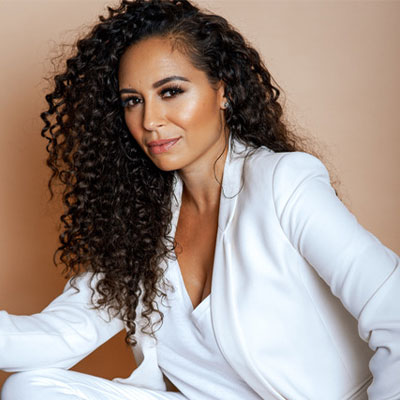
Kellie Licorish is a well-known hair and makeup artist with over 15 years’ experience working in fashion, television and red carpet. Kellie also has a keen interest in photography and art direction. Diversity in makeup is very important to Kellie, who makes it her job to be proficient working with all skin tones, ages and genders. Her clients include many well-known faces such as Kanye West, Gillian Anderson, Natalie Dormer, Steven Tyler and Andi Oliver.
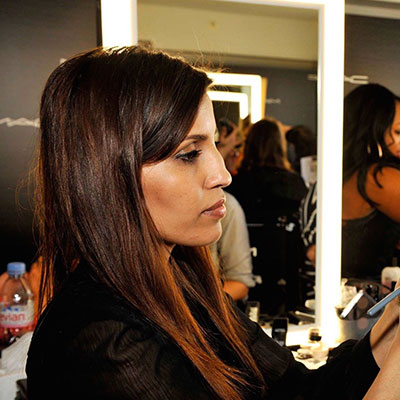
Famida Pathan is a leading hair and makeup artist and experienced lecturer. Inclusive beauty is one of the values at the heart of Famida’s work, whether she is working with VIP clients, creating looks for events such as Cannes Film Festival, working with luxury brands at fashion weeks, or behind the scenes on television and film sets. Famida has extensive experience in working on all skin tones, and is known for creating classic beauty looks and high-end glamour. Her client list includes global talents such as Eva Longoria, Aja Naomi King, Farida Khelfa, Alexandre Mattiussi, Jourdan Dunn, Kanika Kapoor and Mahira Khan.
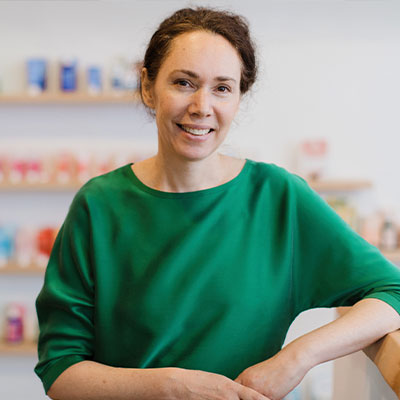
Elizabeth King is Weleda’s Skincare Expert. A holistic facialist and highly qualified in several therapies, she has specialised in the anthroposophic approach to beauty for over 22 years. Before moving to the Midlands, Elizabeth ran a skincare practice in London, and currently offers facial treatments at the Elysia Therapeutic Centre, Stourbridge, and at Rudolf Steiner House in London.
Is skin function and structure the same for all skin tones?
FP: From my experience as a makeup artist, skin function is largely the same for all skin tones.
Whilst doing beauty therapy, before getting into makeup, I gained an understanding of the anatomy of the body, which helped me in my career path as a makeup artist. Knowing the skin is made up of layers - the ‘epidermis’ (top), which actually consists of several sub-layers from the lower ‘Basal’ layer (stratum basale) where melanin is produced through to the outer ‘Horny’ layer (stratum corneum) which has lipids essential for healthy skin - if these lipids are missing skin can become dry, tight and rough, then below the epidermis is the ‘dermis’ (middle) and below that the ‘subcutis’ (which helps to insulate and holds the fatty cells, collagen and blood vessels) - helped me to understand further why certain skin tones behave differently to external elements, for example based on the melanin activity in their skin. The more melanin your skin has, the darker your skin will be, and in general the more protection it will have against UV rays. People with light skin have a little melanin. When exposed to UV rays, melanin production increases causing thickening of the skin to help protect it, resulting in hyperpigmentation.
EK: The skin’s main function for all of us is to provide protection. If we take a look at the skin in relation to its tone, we can see how the skin’s structure adapts in order to best achieve its protective function. A darker skin tone for example, is a skin tone that is genetically richer in melanin. This is because the melanosomes (melanin producing cells) are larger and so contain more melanin. It is said that the concentration of epidermal melanin in melanosomes can be as much as double in darker skin types compared to lightly pigmented skin. For this reason, a darker skin tone has higher natural sun protection compared to a lighter skin tone.
However, the singular dispersion of the larger melanosomes in a darker skin compared to the grouped dispersion of the smaller melanosomes in a lighter skin can mean that those with darker skin tones can often suffer with uneven skin pigmentation (both hypopigmentation and hyperpigmentation). Another differentiation in cell structure of a darker skin tone is the larger number of fibroblasts (collagen producing cells) and macrophages (immune defence cells – which is why darker skin can be associated with less pronounced signs of ageing and preserved elasticity.
The disadvantage of this however, is that due to the high activity of fibroblasts, there can be an ‘over-reactive’ response to wound healing resulting in scarring, which can be raised and bumpy and is referred to as keloid scarring.
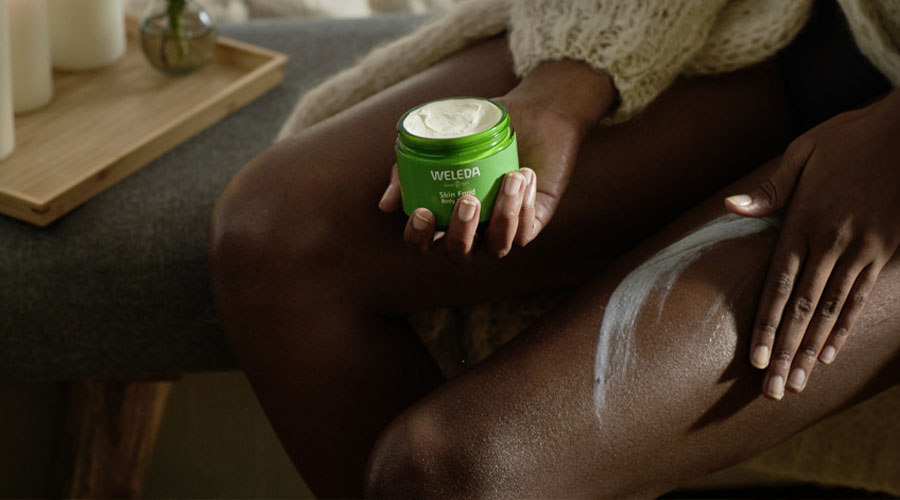
Is skin with higher melanin levels still at risk of sun damage?
KL: Skin with higher melanin has more protection against UV levels. So generally people with darker skin tones could stay in the sun a little longer, without fear of burning or causing sun damage so quickly, compared to people with lower melanin levels.
FP: Even though darker skin tones have more melanin and hence better in-built protection, all skin is at risk of sun damage - hence protection in the form of SPF is crucial. From my experience, I used to get a lot of darker skin toned clients telling me they weren’t worried about getting sun burnt as their skin was darker. Even though this may be correct in comparison to someone of a lighter skin tone, all skin exposed to UV rays is at risk of burning or some form of sun-induced damage – such as age spots, cancer, premature ageing (wrinkles) or hyper-pigmentation. There is more awareness these days, and clients of all skin tones are more aware about protecting their skin. Products on the market are also getting better, with fewer SPF products leaving a chalky grey residue that’s especially visible on darker skin.
EK: Richer melanin content means a higher natural SPF protection, but it does not mean the skin won’t suffer sun sensitivity with excess sun exposure. Increasing awareness of the importance of sunscreen and routine skin checks for everyone is an important part of skin cancer prevention. It’s important to remember that sunlight plays a vital role in vitamin D synthesis in the skin. Being sensible about sun exposure while at the same time ensuring we receive sufficient ‘soft’ sunlight, like a 20 minute walk after breakfast, will allow for the necessary production of vitamin D. Vitamin D is essential for the creation of the skin’s barrier function, bone formation and helps reduce inflammation and control infections.
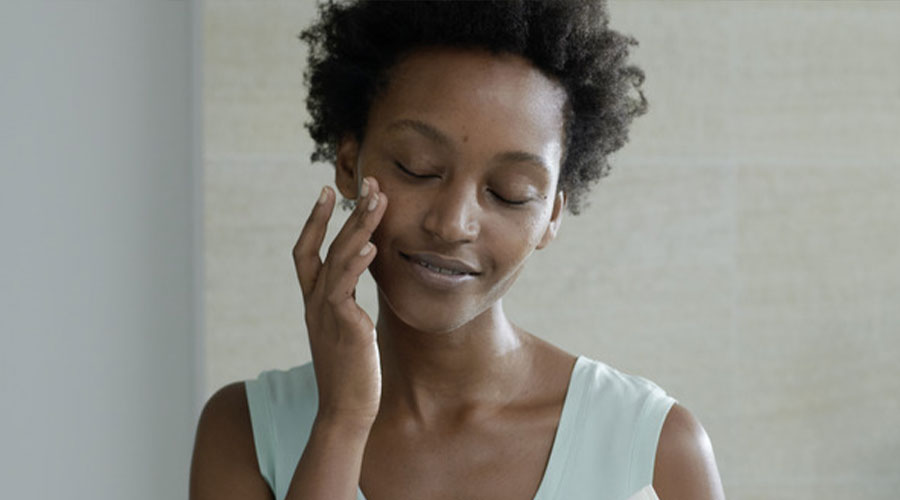
Do different skin tones need different levels of moisturisation, or is that a matter of genetics, diet, health or environmental stresses rather than skin tone?
KL: Genetics, diet, health and environment play a major part in skin moisturisation and overall skin appearance, and that goes for everyone. However as a make-up artist when I work with black and mixed skin tones, I am even more aware of the ‘look’ of the skin. This can be dramatically different if it isn’t well moisturised. It can take on a greyish tone looking a little “ashy” and dull. Black people in particular are known for having skin that looks generally younger. One of the factors behind this is that culturally you are taught from a very early age the importance of keeping your skin well moisturised. Skin and its colour has played a major role in the prejudices that a lot of people of colour face, so for me looking after my skin, and showing it at its best, not only gives a sense of self pride but for me at least is a small act of defiance.
EK: From a dermatological point of view, differences in the stratum corneum (the outermost layer of the skin) in darker skin may contribute towards ashiness. The stratum corneum has more corneocyte layers and is more compact compared with a lighter toned skin. The rate of ‘desquamation’ (the rate at which dead cells slough off) is important. Gentle exfoliation weekly using a muslin cloth together with your cleanser can help support the process of desquamation. And environmental stresses definitely impact moisture levels - supporting the skin’s moisture levels in both the warmer and the cooler months (due to the drying effects of central heating or air conditioning) is essential to preserving a healthy skin barrier and avoiding dryness.
Would you say there any particular skin tendencies such as oiliness or dryness?
KL: Skin tone doesn’t affect factors like oiliness or dryness. But, in my experience, for people with darker skin tones, excessive oil or excessive dryness can be more visible.
FP: I haven’t felt in my experience a particular skin tone has a tendency to be a certain way. But knowing skin tone does help in picking certain products for particular clients, for example what SPF factor is needed for whom.
EK: As darker toned skin often has larger sebaceous (oil) glands than lighter toned skin, there is a tendency for more oil production to occur, especially during the warmer seasons. Hotter climates cause greater the blood flow to the skin’s surface and so the more active the oil glands become. Although darker toned skin has the highest sebum content, contradictorily the ceramide level is the lowest which means being susceptible to transepidermal water loss – and that can lead to dry, flaky skin. So darker skin tones, just like lighter skin tones, can have tendencies towards both oiliness and dryness.
Would you approach acne any differently for different skin tones, and do you have any tips that might be helpful?
KL: Acne is a tricky one as there can be so many factors including overall health. I always direct people to talk to their GP firstly and ideally get referred to a dermatologist. One thing I have noticed is that darker skin can sometimes scar more visibly, but it is not a general rule as there are so many tones and undertones. Once acne is successfully treated, I do recommend that people start the journey of improving the texture and appearance of their skin with professional treatments, but consult a dermatologist or doctor first, as treatments can vary and how best to treat the skin afterwards can very. A gentle weekly exfoliator can help get rid of the dead layers of scarred skin. It is important to keep the newer layers of skin well hydrated and moisturised, eventually giving beautiful results.
FP: In general, I would approach acne in the same way regardless of skin tone as a professional makeup artist, as the aim would be to help conceal or assist in the acne being less visible. What I would consider is the client’s skin type when selecting products to use. If acne is severe then referral to a dermatologist would be advised. In the past clients who have had severe or persistent acne and have been on some form of medication, topical or oral, have often suffered with dehydration, which must be taken into account when selecting products.
EK: Recognising that increased oil flow may be natural in a darker skin tone, the essential step would be to keep pores clear and ‘breathing’. Regular facial steaming with a compress or over a bowl of sufficiently steamy water can help prevent congestion. Avoid using drying skincare products, and opt for preparations that help skin regulate the oil processes. Drying the skin with harsh preparations simply leads to more over-active oil glands, as the skin tries to repair and protect itself. It may feel counter-intuitive, but very light, easily-absorbed plant oils can be helpful in calming acne-prone skin.
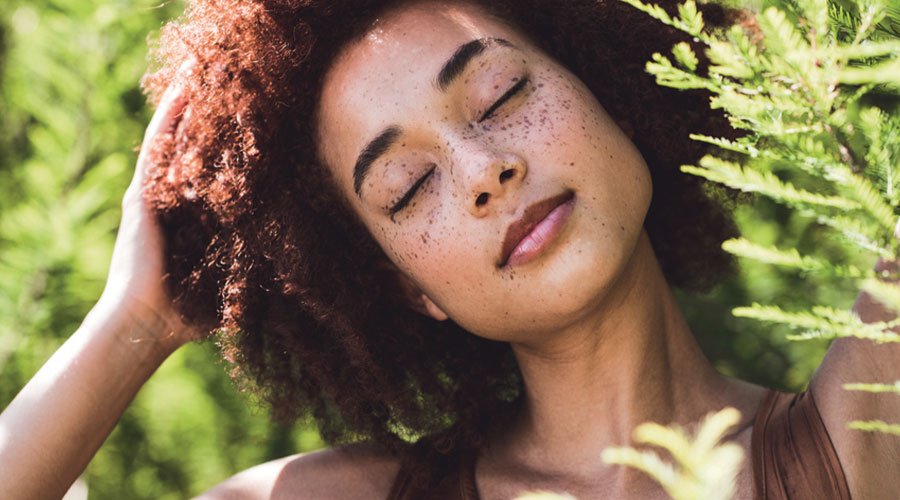
Is skin scarring different with different skin tones? What can help?
FP: I personally have noticed lighter skin tones scar less, even though they may burn more easily and those who have more melanin may not burn quickly but only over a longer period of exposure. Darker skin tones do seem to have a higher risk of scarring though. In darker skin I have noticed scarring and pigmentation issues after a spot or wound has healed. Allowing the skin to heal properly helps to reduce the risk of scarring, using products that contain ingredients such as vitamin E or cocoa butter which can help healing.
EK: Because of the highly active, larger fibroblasts found in darker skin tones, there can be a tendency towards the skin ‘over-healing’, resulting in raised keloid scars. Supporting the skin’s regenerative and renewal processes is therefore a key focus, in order to help the healing and avoid or soften the keloid scarring. Stimulating the microcirculation in the skin is vital. It may help to alternate with warm and cool facial rinses. The warmth stimulates blood flow while the coolness stimulates the skin’s own waste removal system (lymphatic system). These circulatory systems support the skin’s regenerative processes.
Are there any particular ingredients that are best avoided?
FP: It depends on the individual’s skin type, allergies and sensitivities, all of which are checked during consultations. Certain people could be sensitive to certain ingredients: I have had clients who found retinol (Vitamin A) too strong, or were allergic to nuts. All this affects what products you select and ultimately use.
EK: Be sure to use non-comedogenic preparations (as these can block pores), for example skincare formulated with mineral oils which are not absorbed by the skin so they can sit on the surface as an occlusive layer. And avoid anything that would strip the skin’s natural oils or upset the natural oil processes in the skin, such as harsh alkaline soaps and detergents like sodium laurel sulfate often found in cleansing products.
Are there any Weleda products you would recommend?
KL: I work with all skin tones and find a good favourite on my makeup station is Weleda Skin Food. Whether I am in Paris at fashion week or in a TV studio, lots of people comment on their love of the product or are intrigued to learn more.
FP: My go-to Weleda product has always been Skin Food. And more recently Skin Food Light: the lightweight texture has worked on all skin tones for me. I have also recently recommended the Weleda Pomegranate facial care, particularly the eye cream and day cream.
EK: The Prickly Pear 24h Hydrating Facial Lotion or Cream both provide high levels of hydration without being too heavy. Aknedoron Cleansing Lotion is a highly effective cleanser for skin that is troubled with hormonally related spots - the calendula and chamomile ingredients help calm inflammation and support the skin’s own regenerative processes. If skin tone is appearing a little ashy, it’s possible to restore skin radiance with some Citrus Bath Milk: add half a capful to a basin of warm water to soak a flannel or muslin and apply as a compress. Finally, I second Kellie’s and Famida’s recommendations: Weleda’s iconic Skin Food Original is ideal for those rough, dry skin patches that are battling to heal.


